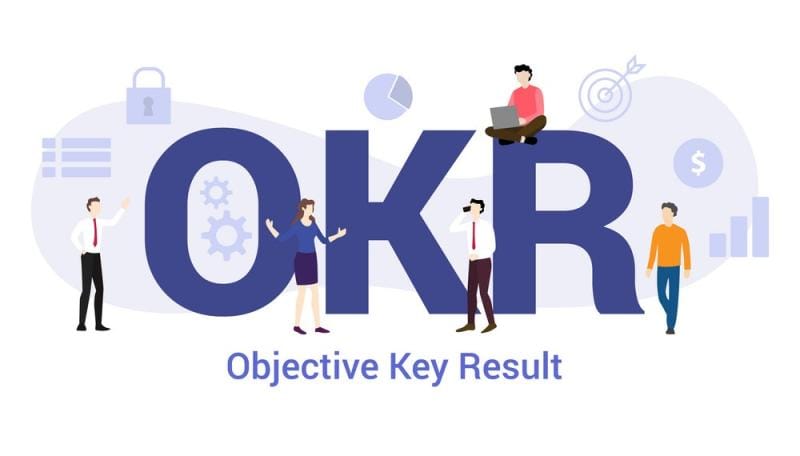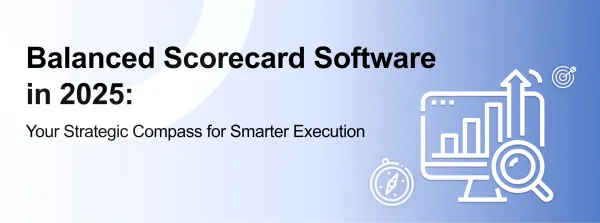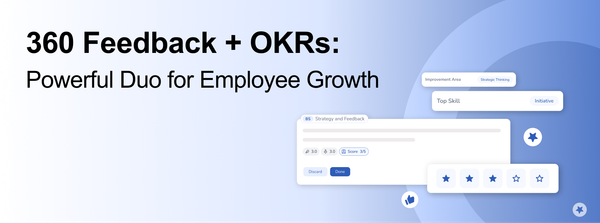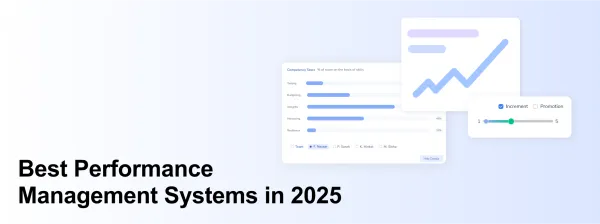OKR cycle – 3 steps that lead to success
Here is everything you need to know about the benefits of an OKR cycle, how to set up one successfully and the mistakes to avoid.

Set
What does setting goals mean? It is the first step to creating a successful OKR cycle. It needs to be done right so the next two steps succeed.
Make sure your goals are:
- Achievable
- Actionable
- Concrete
- Worthy of the resources spent
- Engaging
If even one of these factors is not ticked, then go back to the table and rework the objectives. There are teams that spend incredible time just setting the right objectives because they know how important this is.
Once the objectives are set, discuss the right key results to track these objectives.
Key results need to be:
- Clear
- Quantifiable
- Measurable
- Easy to follow through
- Outcome-focused
Here is an example of each of the good and bad objectives to give you an idea.
|
Type of objective |
Example |
| Aspirational | Increase the customer pool by 100% in the next 4 weeks |
| Low-value | Increase the website traffic by 2% in the next 3 months (website traffic doesn't always convert into leads. So, a 2% increase may not matter much) |
| Concrete | Increase website lead conversion by 25% in the next 3 months |
Here is a list of practical OKR examples for you to check out from one of our blogs.
Align
Alignment refers to the alignment of the objectives with other members of the team and organization. When you set an OKR cycle, the complex thing about such objectives is that a person's objective is not just theirs. It can be dependent on other people's objectives, or it can affect the objectives of another team member. That is why alignment is important.
Start by charting the interdependencies. Find out how these objectives overlap or tag one another and make sure employees know about these interdependencies. Create shared OKRs if team effort is needed to achieve these objectives.
Alignment can take time in the beginning, but once the framework is set, it will get easier.
Achieve
The last step of setting a successful OKR cycle is to achieve the objectives. Logically, if this step doesn't happen, the first two will not matter. Help your employees achieve their objectives by tracking and monitoring the process regularly. Some employees might be moving away from the right track, while others may be concentrating on activities that don't add value to the objectives.
Few employees may have backlogs, while others who are doing a great job may need to be reminded that they are doing well. For all these, feedback and monitoring sessions are important.
If your organization is used to 360-degree feedback and continuous communication, then this part will come easily. If you think your team needs to work on the feedback and communication aspect, then PossibleWorks' continuous feedback tools can help. Check this to know more.
Takeaways
In the OKR retrospective, all three steps of the cycle matter and need to be approached right. Even if one of these steps is not designed right, the remaining ones won’t be as effective. So, are you looking to implement an effective OKR cycle in your workplace? Do check out PossibleWorks' OKR tools and software. These are designed to automate the process, create easy interdependencies, and make tracking and monitoring hassle-free and simple.
Want to know more? Get in touch with us for a demo of our products.



